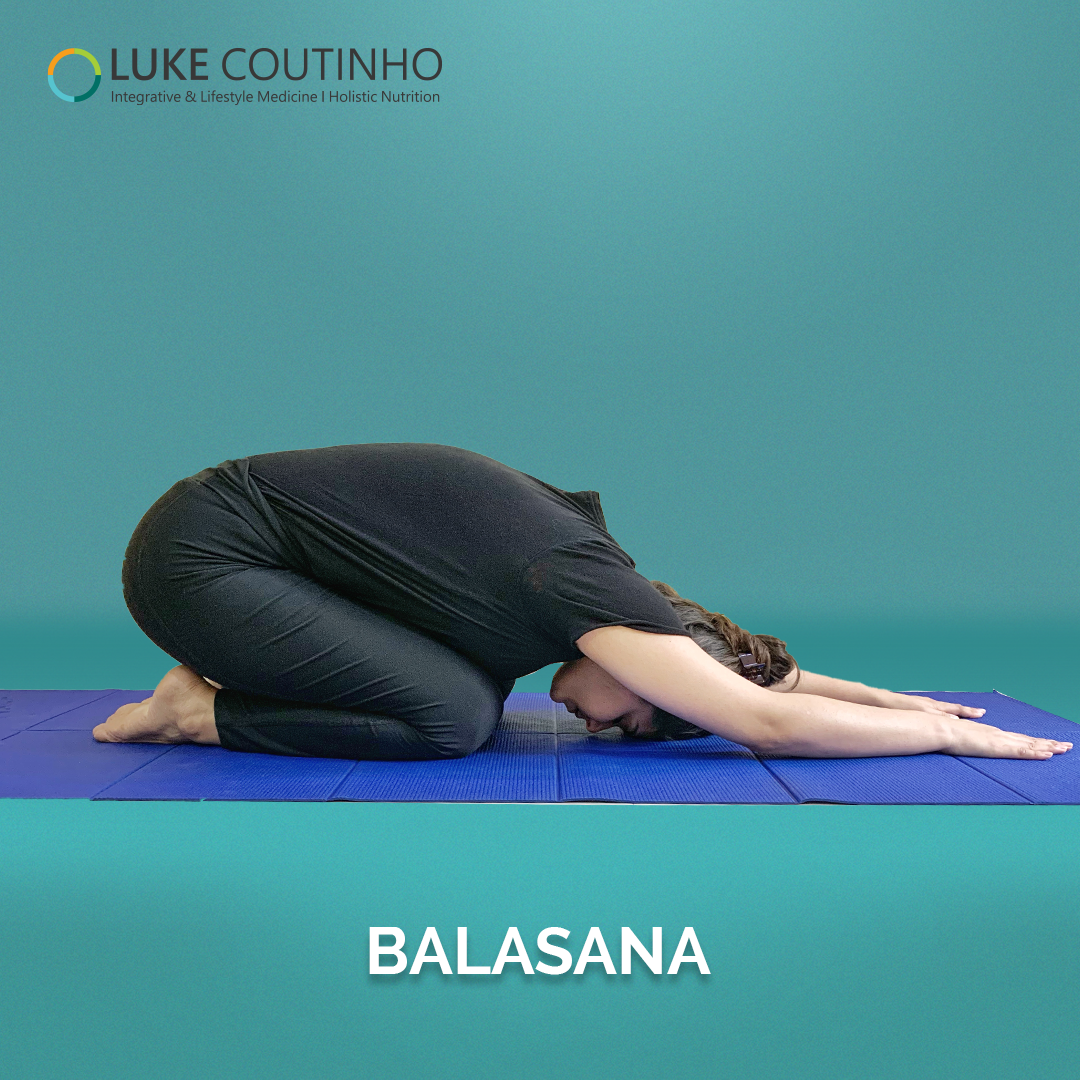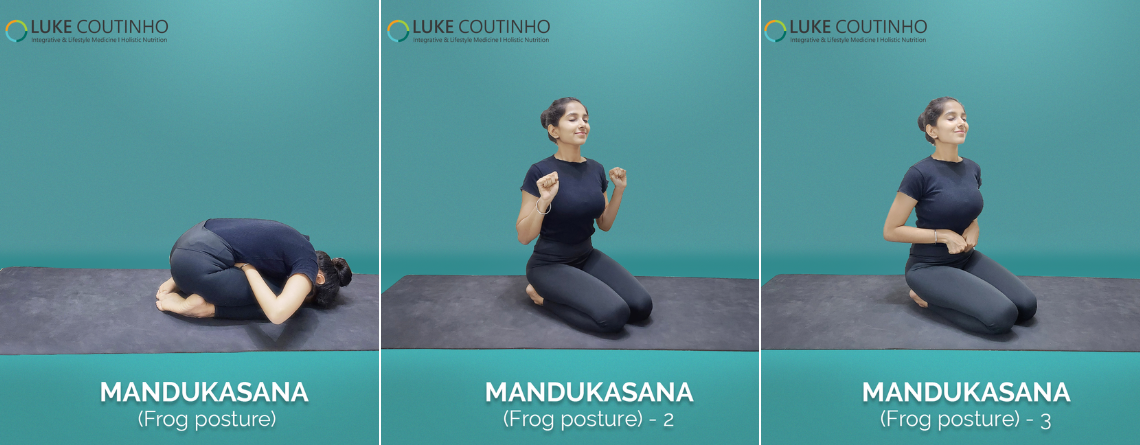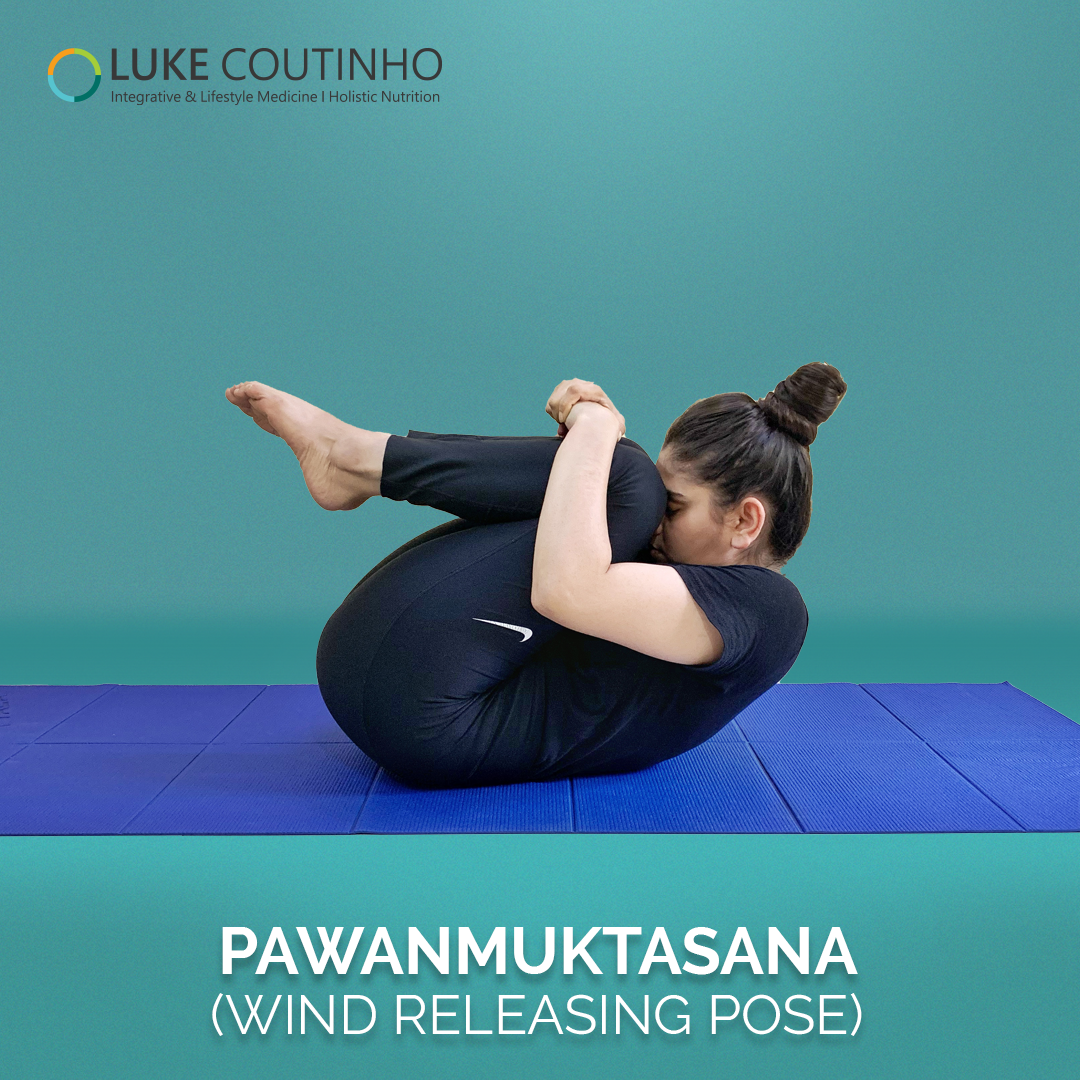Not Having a Great Gut Feeling? Here Are Top 7 Yoga Asanas for a Happy Gut

“What should I do for a happy gut?”
This is one of the most googled health questions in 2022. So many of us constantly look for superfoods, cleanses, prebiotics, probiotics, and supplements to take care of our gut. While it is important to identify the food items that cause digestive issues, it is equally important for us to check other factors that will help to improve gut health by embracing traditional wisdom and going back to our roots. For instance: practicing mindful eating, taking light strolls post meals, having good sleep hygiene, practicing a few yoga asanas, pranayamas, and so on.
We all know that yoga has been highly regarded for its benefits on the body and mind. What some of us do not know is that the benefits of yoga on the body go beyond fitness, strengthening muscles, and improving flexibility.
To understand how this works, let’s understand what your “gut instinct” actually means.
Have you ever experienced a cramp or butterflies in the stomach when nearing a deadline? Or the feeling to pass a motion when anxious? That is when we begin to have that “gut instinct.” A feeling of cramping in the abdomen when you cross a deadline without submission or feel butterflies in the stomach when nervous or want to rush to the washroom due to anxiousness.
How are emotions experienced in the gut? The gut has its own nervous system, called the enteric nervous system, also called the second brain. There are over 100 million nerve endings in the gut.
This second brain is connected to the master brain via a network of nerve pathways and they also share many neurotransmitters to communicate. Most of the serotonin, an important neurotransmitter, is secreted in the gut! This bidirectional pathway is referred to as the brain-gut axis and involves moment-to-moment communication and digestion control. This also explains why your mouth waters at the sight of juicy lemon before it even hits your stomach.
Yoga can help relax the nervous system and is thus one of the most important tools for healing any gut condition. We understand this very well and hence our You Care Wellness Gut Health Program incorporates yoga as a part of its protocol.
Let’s test the power of yoga on your gut out
Try this exercise. Close your eyes and picture yourself in the middle of a jungle. Now, picture a hungry tiger approaching you. Visualize this for 2 minutes. Felt stressed, fearful, and anxious? This is your body’s flight and fight response. Now start taking several slow, deep, and controlled breaths to help dial back that stress response. This, in turn, can help to reset the rest and digest mode of the nervous system. Yoga directs us to reinstate the body’s intelligence and transition back to a state of relaxation and ease. This leads to positive changes in their digestion. How is this relevant for digestion? Our body can only digest food in a state of “rest and digest”. Digestion is of the least importance when our body experiences stress. This is why it is necessary to feel relaxed while eating meals.
How does stress affect digestion?
The brain-gut axis also explains how stress and emotions are felt in the gut. Have you experienced butterflies before a presentation or diarrhea before public speaking?
These “gut instincts” we talked earlier about are the fate of stress being communicated to the gut via these bidirectional nerve pathways. At times, living with unpredictable gut symptoms (various episodes of constipation, bloating, diarrhea) is highly stressful on its own.
Having to search for a bathroom or feeling uncomfortably bloated at a party can trigger stress and anxiety, which further aggravates the gut, thereby creating a vicious circle.
Studies show that one contributing factor to gut issues is stress. Yoga helps alleviate this stress and anxiety. But its benefits also extend to specific gut issues to improve overall well-being. Yoga practice is additionally good for those who need to get stuff moving when they’re feeling belly discomfort. Certain yoga postures can gently compress and release the trapped gas from the stomach and poop down the anus.
The Mind-Gut Connection
Just like food, the way we process our feelings impacts the way we feel. Anything you eat goes through stages of chewing, examination, digestion, and eventual excretion from the body. If it does not get thrown away, it may lead to bloating and constipation. The same phenomenon applies to feelings. If we hold onto feelings of sadness, insecurity, shame, and guilt, it paves the way for stress and improper digestion. Not being able to let go and holding on to anything – mentally or physically may not only lead to feeling heavy and blocked but also sick. These entities may look separate, but the fact is, they are connected.
How does yoga help?
The gut or digestive tract comprises the mouth, esophagus, stomach, pancreas, liver, gallbladder, intestine, colon, and rectum.
Yogic techniques for a happy gut target the stomach, small intestine, large intestine, and liver meridians. It helps in detoxifying and rejuvenating the gut to perform optimally, calming the mind, and keeping the stomach active to favor better digestion. There are 8 paths to yoga, with asanas being one amongst them. Other aspects are being a compassionate human, practicing breathwork, meditating, and so on. Your yoga asana practice is like a massage for your internal organs. If you’re coping with some gut issues, gentle yoga poses and deep breathing are excellent ways to relax the mind and gut.

Reduces stress
The gut is so important in regulating stress responses within the body, as it is involved in the production of neurotransmitters in the brain like dopamine, GABA, and the regulation of other hormones. The microbiome is extremely sensitive and can misbehave under periods of stress. Breathwork, meditation, and certain yoga postures help switch on the parasympathetic nervous system and flush stress responses, thereby restoring health and balance within our gut.

Increases microbiome diversity
Activity is correlated with higher levels of microbiome diversity and healthy strains of bacteria within our gut. As a mild exercise practice, yoga asanas have the potential to support a flourishing and diverse microbiome.
Aids digestion
“All disease begins in the gut” said Hippocrates. It is extremely important to take good care of the gut and strengthen health. “Agni” is required for digestion. Various yoga poses help in igniting the Agni (the digestive fire) and also release toxins from the body and cleanse it internally.
Why is this important? Well, if the engine of a car is weak, it gives less mileage but more pollution. Similarly, if the ‘Agni’ (engine) is weak, less energy is produced by the gut (travels less distance), and more toxins are released (pollution) and accumulated in the cells. Thus, a powerful Agni is needed for a happy gut.
Here are a few yogic techniques for a happy gut –
Ustrasana (Camel Pose)
Camel pose stretches the stomach and intestines which can potentially alleviate acidity and constipation.
Steps:
- Start in a kneeling position with your knees slightly apart, your thighs perpendicular to the floor, and the soles of your feet facing the ceiling.
- Inhale and draw your hands up the sides of your body as push your chest forward and up and push your hips forward.
- Exhale and reach your hands back one at a time to grasp your heels. (If you cannot reach your heels when your feet are flat, curl your toes under and rest on the balls of your feet).
- Bring your hips forward so that they are over your knees while letting your head fall back, opening your throat.
- Hold for five breaths then gently return to your kneeling position.
Balasana (Child’s Pose)
To learn this asana step-by-step, watch this: Balasana (Child’s Pose)

Balasana compresses the abdomen, relaxes the mind, and massages the internal organs.
Steps:
- Start in a kneeling position.
- Drop your buttocks toward your heels as you stretch the rest of your body down and forward, with your stomach resting on your thighs, your forehead on the mat and your arms stretched forward.
- Hold for 10 breaths. Gently return to a kneeling position.
Malasana (Garland Pose)

When our hip flexors are tight, they can interfere with our internal organ function, including digestion. This pose helps to ease bowel movements.
Steps:
- Stand on the mat with your feet wide apart.
- Bend your knees and lower your butt to come in a squat position.
- Bend your elbows to bring the palms together and take your arms inside your knees to press your elbows against your inner knees.
Ardha Matsyendrasana (Half Lord of the Fishes Pose)
To learn this asana step-by-step, watch this: Ardha Matsyendrasana (Half Lord of the Fishes Pose)
This pose massages the abdominal muscles and twists the internal organs to help stimulate digestion. Compressing the colon can aid digestion. These twists can also stimulate the movement of unwanted agents that accumulate in the body and can help usher them out.
Steps:
- Start Ardha Matsyendrasana by sitting in Dandasana. Your legs must be stretched in front.
- Flex your right knee and place your right foot outside the left knee.
- Bend your left knee and bring your left foot around the right hip.
- Inhale deeply and raise your left arm as you twist your torso. Pass the left arm around the outer edge of your right knee.
- Hold your right foot with the left hand so that your right knee is closer to your left armpit.
- Inhale deeply and while keeping your back straight, raise your right arm in the front and gaze ahead.
- Exhale and continue twisting towards the right.
- Fix your gaze towards the right and look past your right shoulder.
- Hold the pose for 30-40 seconds.
- Return to the starting position and repeat on the left side.
Vajrasana (Thunderbolt Pose)
To learn this asana step-by-step, watch: Vajrasana (Thunderbolt Pose)
Performing the Vajrasana helps our digestive system in many ways. It obstructs blood flow to our legs and thighs and increases it in our stomach area, thus improving our bowel movements and relieving constipation. Vajrasana also helps us to get rid of flatulence (gas) and acidity.
Steps:
- Kneel on a flat surface on a yoga mat and sit down on your legs.
- Keep your knees close and your big toes touching each other but keep your heels apart.
- Your heels must be touching the sides of your hips.
- Then keep your palms on your thighs and your back/spine straight.
- Keep your head straight, eyes closed, and take deep breaths.
- Hold this position for a minute and as long as you can.
Mandukasana (Frog Pose)
To learn this asana step-by-step, watch this: Mandukasana (Frog Pose)
This pose helps massage all the organs in the gut thereby improving its function and also detoxifying.
Steps:
- Sitting in Vajrasana, make a fist of your hand and place it around your navel.
- Exhaling, bend forward, and hold the pose for 5-10 seconds.
- Return to the starting position as you inhale.
Pawanmuktasana (Wind Releasing Pose)
To learn this asana step-by-step, watch this: Pawanmuktasana (Wind Releasing Pose)
This asana helps release all the trapped air and massages the ascending and descending colon.
Steps:
- Lie on your back and as you exhale, lift your knees close to the chest and hold your shin bone as if you are hugging your knees comfortably to the belly.
- Now lift your head and try to touch the forehead to the knees.
- Hold for 3-4 breaths, then return your feet to the floor.
A few pranayamas that may help include:
Yoga is a traditional practice that has existed for thousands of years. It promotes health by engaging people mentally, physically, and spiritually. Some research supports yoga as a complementary treatment for digestive disorders. It shall help alleviate certain symptoms, like discomfort, gas, bloating, and constipation.
With potential digestive relief, yoga may provide the relief you are looking for.
(Written by Harshala Chheda, Yoga Therapist, Senior Nutritionist, and Lifestyle Expert. Reviewed by Luke Coutinho)
Want to treat the root cause of your gut issue and bring your happy gut feeling back on track? We help you find a way.
Join our You Care Wellness Gut Health Program here
Our integrative experts will help you balance your health with lifestyle changes. Speak to our wellness consultants on 1800 102 0253 or write to us at info@lukecoutinho.com to know more.
Disclaimer: Always make an informed decision before trying any asanas, especially if you are on certain medications or have a medical condition or any physical issues, keep your doctor or health care practitioner in the loop before trying anything new. None of what is mentioned in this blog can be a replacement for your doctor’s advice.
RELATED READING
How To Build Good Gut Health?
What Is a Leaky Gut? Symptoms, Causes and Fixes
Migrating Motor Complex: How To Activate the Most Natural Gut Cleanse Ever?
|
From a pimple to cancer, our You Care Wellness Program helps you find a way Talk to our integrative team of experts today 18001020253 |















Leave a Reply